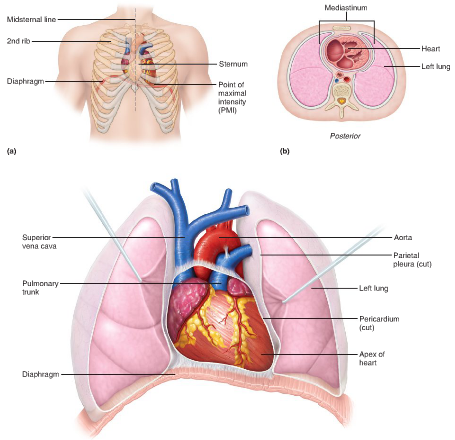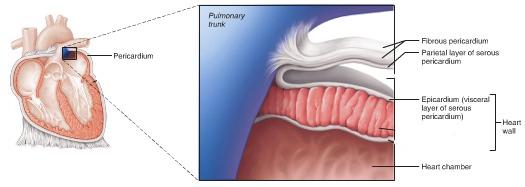Instructions for Side by Side Printing
- Print the notecards
- Fold each page in half along the solid vertical line
- Cut out the notecards by cutting along each horizontal dotted line
- Optional: Glue, tape or staple the ends of each notecard together
Chapter 18: The Heart
front 1 Describe the size, shape, location, and orientation of the heart in the thorax. | back 1  Size: fist, weighs less than a pound
|
front 2 Coverings of the heart. | back 2  Fibrous Pericardium
|
front 3 Fibrous Pericardium | back 3 Structure: superficial part of double-walled sac surrounding the heart; consists of dense connective tissue
|
front 4 Serous Pericardium | back 4 parietal: lines internal surface of fibrous pericardium; attaches to large arteries exiting the heart
|
front 5 Pericardial Cavity | back 5 between the parietal and visceral layers; slitlike cavity that contains a film of protein-rich fluid |
front 6 Stroke Volume (SV) | back 6 Amount of blood ejected by one contraction of the heart. |
front 7 End Diastolic Volume (EDV) | back 7 Amount of blood in the ventricle at the end of relaxation |
front 8 End Systolic Volume (ESV) | back 8 Amount of blood in the ventricle at the end of contraction |
front 9 Cardiac Output (CO) | back 9 The amount of blood ejected from the heart in one minute |
front 10 Heart Rate (HR) | back 10 The frequency at which the heart beats |